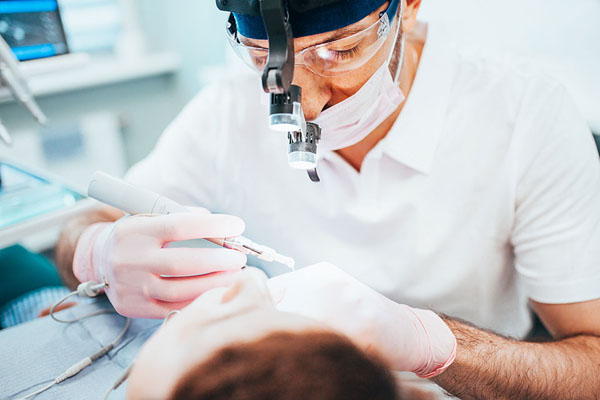- All-On-4 Dental Implants
- Benefits of Dental Implants
- Bone Grafting for Dental Implants
- Dental Implant Candidacy
- Dental Implant Care
- Dental Implant Cost
- Dental Implant Procedure
- Dental Implants vs. Other Tooth Replacements
- Endosteal Dental Implants
- Failing Dental Implants
- Implant-Supported Bridges
- Implant-Supported Dentures
- Mini Dental Implants
- Same-Day Dental Implants
- Single-Tooth Dental Implants
- Sinus Lift for Dental Implants
- Smoking and Dental Implants
- Fixed Implant Prosthesis
- Full-Mouth Reconstruction
Sinus Lift for Dental Implants in Green Bay
Our Green Bay Dentist Offers Dental Implants
Are you considering dental implants in Green Bay for missing teeth, but have been told you need a sinus lift before you can get them? If so, you’re not alone. A sinus lift is a common procedure that makes dental implants possible for individuals with insufficient bone in the upper jaw.
At Allouez Family Dental, we’re here to help you meet your smile goals and achieve exceptional oral health. Dental implants can be a life-changing treatment, so if you’re ready to get started, contact our Green Bay dentist near you today at 920-339-8980 to schedule your consultation.

What Is a Sinus Lift?
A sinus lift, also known as sinus augmentation, is a surgical procedure that adds bone to the upper jaw in the area of the molars and premolars. This is often necessary when the sinus cavity is too close to the jaw or there isn’t enough bone height to support dental implants. The procedure involves lifting the sinus membrane and placing a bone graft to create a stable implant foundation.
Why Is a Sinus Lift Necessary?
Dental implants require a certain amount of bone to anchor securely. However, factors like tooth loss, gum disease, or natural bone structure can lead to insufficient bone in the upper jaw. A sinus lift addresses this by:
- Increasing bone volume in the upper jaw.
- Creating a stable base for dental implants.
- Preventing complications from sinus proximity.
Who Needs a Sinus Lift Procedure?
Not everyone who wants dental implants requires a sinus lift. The maxillary sinus lift surgery is typically recommended for patients who:
- Have lost teeth in the upper jaw, leading to bone resorption.
- Have naturally thin or low bone in the upper jaw.
- Have an enlarged sinus cavity that encroaches on the implant site.
- Have experienced bone loss due to periodontal disease or trauma.
Get dental implant ready! Contact our dentist in Green Bay at 920-339-8980.

Bone Graft Materials Used in Sinus Lifts
The success of a sinus augmentation depends on the bone graft material used. Common options include:
- Autograft: Bone taken from your own body (usually hip or chin). This is highly effective but requires an additional surgical site.
- Allograft: Donor bone from a human tissue bank, processed for safety.
- Xenograft: Bone sourced from animals (usually bovine), treated for compatibility.
- Synthetic Graft: Man-made materials like calcium phosphate or hydroxyapatite.
Types of Sinus Lift Procedures
Traditional Sinus Lift (Lateral Window Technique)
This is the most common method, involving:
- An incision in the gum to access the jawbone.
- Creating a small window in the bone to gently lift the sinus membrane.
- Placing bone graft material in the space created.
- Closing the incision and allowing the graft to integrate with the bone.
Osteotome Sinus Lift (Internal Lift)
This less invasive technique is used when only a small amount of bone is needed:
- Our dentist accesses the sinus through the implant site.
- The sinus membrane is gently lifted using specialized tools (osteotomes).
- Bone graft material is added, and the implant may be placed simultaneously.
Benefits of a Sinus Augmentation for Dental Implants
A sinus lift surgery offers numerous advantages, making it a critical step for many implant patients:
- Enables Dental Implants: Creates sufficient bone for secure dental implant placement.
- Improves Oral Function: Restores chewing and speaking capabilities.
- Enhances Aesthetics: Supports a natural-looking smile.
- Prevents Sinus Complications: Reduces the risk of implant failure due to sinus proximity.
- Long-Term Durability: Provides a stable foundation for implants that can last decades.
To discover if you’re a candidate for dental implants with a sinus lift, contact our dental office near you at 920-339-8980.
Frequently Asked Questions
How long does a sinus lift last?
The bone added during a sinus lift is permanent, provided the graft integrates successfully and you maintain good oral health. The implants placed afterward can last a lifetime with proper care.
Can I blow my nose after a sinus lift?
Avoid blowing your nose for at least 2 to 4 weeks after you undergo sinus lift surgery, as this can put pressure on the sinus and disrupt healing. Your dentist may recommend saline sprays to keep your nasal passages clear.
Are there alternatives to a sinus lift for dental implants?
In some cases, shorter implants or angled implants (e.g., All-on-4) can be used to avoid the sinus area. Discuss these options with your dentist to determine the best approach.
Do You Need a Sinus Lift?
A sinus lift can be a game-changer for individuals seeking dental implants but lacking sufficient bone in the upper jaw. If you’re ready to take the next step in your tooth replacement journey, contact our dentist in Green Bay by calling 920-339-8980 today.
